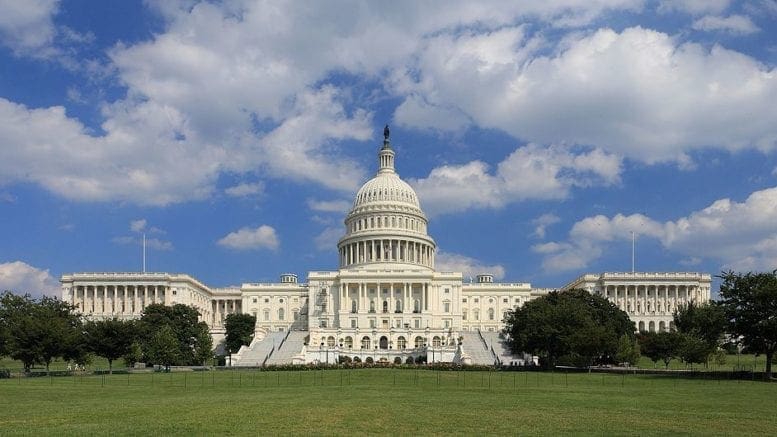[Feature image above, Martin Falbisoner, CC BY-SA 3.0 https://creativecommons.org/licenses/by-sa/3.0, via Wikimedia Commons]
By John A. Tures, Professor of Political Science, LaGrange College
We’ve had more than a dozen government shutdowns since 1980, and even more cases of brinkmanship that don’t get included in those brutal statistics. The most important question we should be asking is not how we can pass some continuing resolution or stopgap measure to prevent the next shutdown, merely kicking the problem a few months down the road. We need a permanent plan to join other major industrial democracies who don’t routinely have these fiscal disasters.
In 1980, the Attorney General of the United States permitted a small government shutdown of the Federal Trade Commission in the waning days of the Carter Administration. But don’t blame former President Jimmy Carter for all of these repeated fiscal flubs. Each party bears some responsibility.
Democrats in Congress backed President George H. W. Bush into a corner by forcing him to do a government shutdown, to get him to renege on a campaign promise not to raise taxes. But Democrats also pointed out that such a promise boxed Bush in for dealing with deficit issues.
House Speaker Newt Gingrich all but announced an intention to shut down the government until President Bill Clinton agreed to his terms. But it was Gingrich who found himself on the defensive, after a series of missteps helped improve President Clinton’s position in this debate, and his reelection in 1996.
President Obama had to deal with a similar dispute in his second term. And President Donald Trump presided over the longest government shutdown in history.
Now House rebels are seeking to use their small numbers against the narrow lead held by GOP House Speaker Kevin McCarthy. Already we’ve had a near shutdown, and another one is poised to occur in the coming days.
Believe it or not, few other countries, if any, have such government shutdowns, and none with the increasing frequency you see in America.
There are several solutions to such crises.
1) Keep funding at current levels before the shutdown. A deal to maintain the status quo should avoid the painful furloughing of government workers, and the costs of millions, even billions, not in savings but in losses on the market and to the economy. No new money should be spent without a new deal.
2) Change House and/or Senate rules. Such rules may allow the discharge of a bill from being bottled up by a few congressional malcontents. That way, bipartisan votes can occur by the overwhelming majority in Congress, who have no intention of giving our enemies a victory that they seek.
3) Freeze pay for House and Senate members until the funding crisis concludes. This sounds like the kind of line you’d see on a meme. But it may be just what we need to get pro-shutdown groups to pay some of the costs, which would get them to feel the financial pain they cause for others, even though stress would probably not be comparable. Some members have even offered to forego pay during the crisis. How much is withheld, returned and for how long could be tied to how long it takes to get a budget deal going. It sounds harsh, but so does holding our government hostage for a few bucks, which seems like petty politics as this point.
Whatever we decide, we need to show America that we can pass budgets. This spectacle is giving ammo to our enemies to show democracy doesn’t work. Since this generally doesn’t happen in other democracies, it’s clear that there are possible solutions.
John A. Tures is a professor of political science at LaGrange College in LaGrange, Georgia. His views are his own. He can be reached at jtures@lagrange.edu. His Twitter account is JohnTures2.
